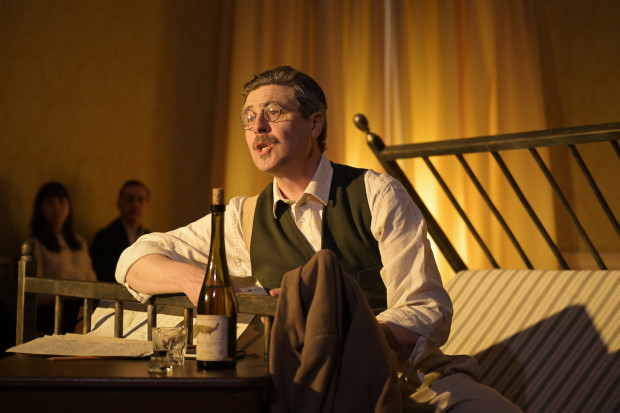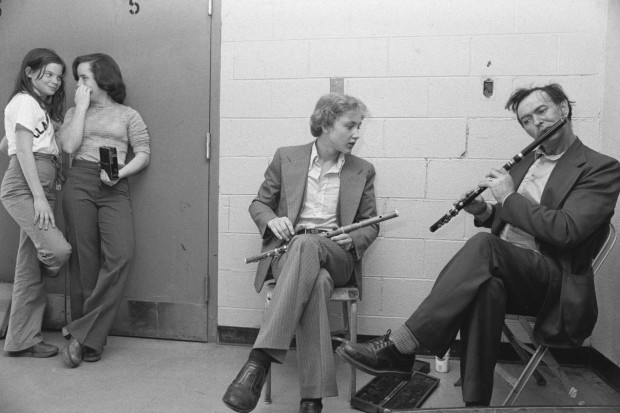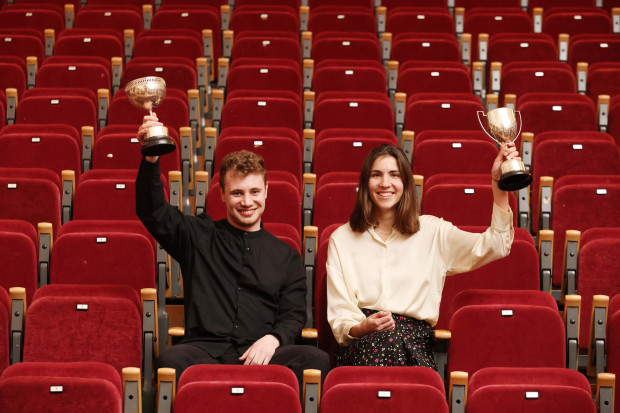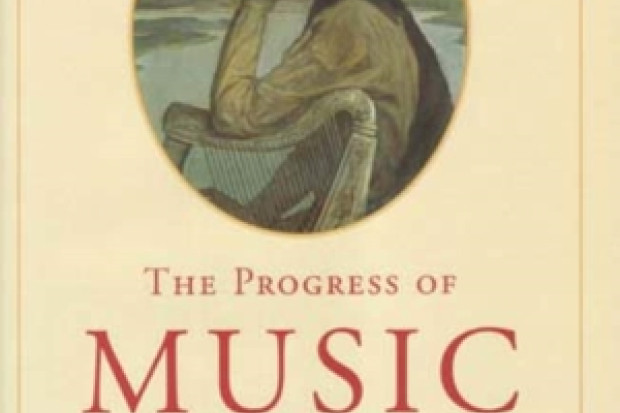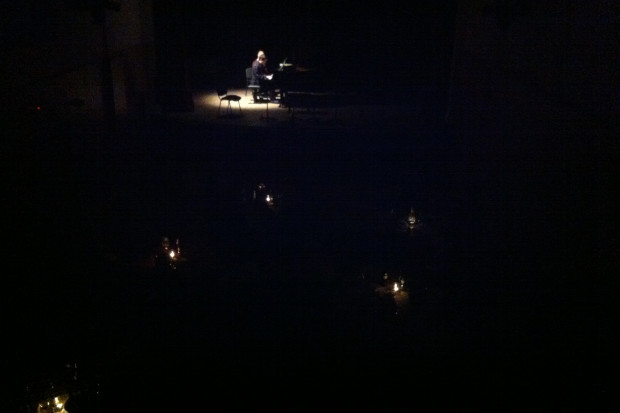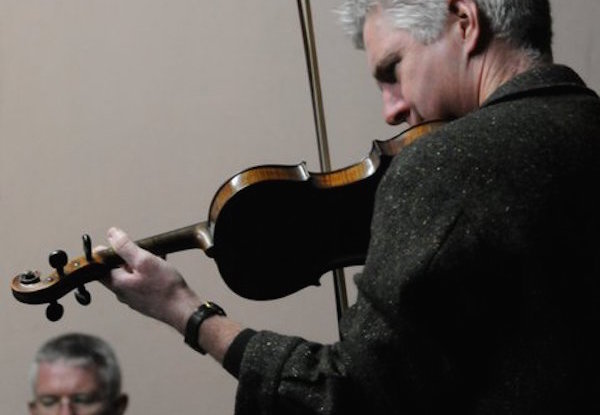
Fiddle player and author Martin Dowling. Picture: Christine Dowling
The Manufacture of Irish Traditional Music
As a traditional Irish musician you are defined very often by past practice – you root your performance in the music of past generations and debate what is good, bad and ugly according to values learned from such sonic ghosts. What we as members of this community of sound mean by ‘tradition’ is often popularly accounted for as relating to history.
Academics, however, try to think differently, sometimes examining meaning beyond what is merely in the dictionary – they look for societal meanings, understanding concepts like ‘tradition’ in wider contexts.
As an academic, I have often critiqued the popular conception of tradition being ‘rooted’ in history – and I have done so in The Journal of Music – and been thoroughly critiqued for my linguistic approach. In Traditional Music and Irish Society: Historical Perspectives, Martin Dowling provides a historical approach, showing how what we understand as traditional music has been generated through a confluence of political, economic and social forces of Irish history over the past four-hundred-odd years. Dowling essentially illustrates that Irish traditional music is a newly constructed music, manufactured for the needs of an island going through traumatic upheaval and an emerging nation. He does this in a thorough, painstaking and creative use of the skills of a contemporary historian.
This recent book is particularly significant because most academic engagement with this music is by ethnomusicologists and researchers from the broadly indefinable field of cultural studies, who take theoretical models from a wide range of humanities and social studies. Despite the importance of history to this music, academics have failed to really engage with that fact. There are many ways in which the values of the academy and the values of the tradition are not reciprocal and this is just one more. In my opinion, however, the Irish traditional music community could gain a far better, thoughtful and productive view of itself through the use of critical historical enquiry. Essentially we need to look for what might have been there instead of what we want to have been there.
The imagined entity
Martin Dowling, hailing from the mid-west of the United States, is an excellent traditional fiddle player. He released a CD in 1998 with his wife Christine and Daithí Sproule, A Thousand Farewells, on which he performs some really beautiful music composed by himself. More recently, in 2013, he has shown a more innovative side through his John Cage inspired recording Twenty Twelve with the group Trad Noise Trio. He is also a musicologist, working in the music department of Queen’s University Belfast, with a background as a historian and a particular research interest in Irish economic history.
Traditional Music and Irish Society begins with a little of his own past where he shows how the study of Ireland’s history and the growth of his fiddle playing have walked hand-in-hand from the start of his academic journey, and to some extent this work is the inevitable singular expression of these two strands of his career thus far.
Dowling’s book – which spans the pre-eighteenth century through union with Britain, famine, revival, right through to the present day in the North – is perhaps the first truly contemporary historiographical monograph concerning the imagined entity we call Irish traditional music. There is no other contemporary book like it, providing such a broad and detailed account of the history of this tradition. He weaves a path through aspects of the history of the music in a style that would put it on course bibliographies in university history and music departments. As such it makes a massive contribution to the understanding of our tradition, showing how music has been a cultural actor and even victim in the history of this small island.
The introduction notes the peripheral place of music in the field of Irish studies. There is still, to this day, a definite uncertainty as to what discipline should dominate the study of Irish music. Should it live in the music department and be left to the ethnomusicologists and music historians? Or should it be left to the more disparate Irish studies department, which is traditionally dominated by literature, history and politics? Perhaps it has a role in both environments and will benefit from development in both.
Dowling, also in his introduction, quite rightly points to how modern traditional Irish music is. As he shows later in the book, the music we consider as the core of what is traditional music – jigs, reels and other dance music – does not emerge properly as an ‘Irish’ music until the nineteenth century. It is indeed peculiar that John and William Neal’s A Collection of the Most Celebrated Irish Tunes, a book of mainly harp music published in 1724, is celebrated as the first collection of Irish music, while the first collection of dance music, Neal’s A Choice Collection of Country Dances, published in Dublin two years later is rarely mentioned (the absence of ‘Irish’ from the title is significant).
Dowling hopes that an awareness of Irish traditional music’s modernity, and the book generally, will allow traditional musicians ‘to connect their repertoire and style to the contexts in which they originated… that such awareness will also set musicians free from the politics and history that often constrain artistic practices, so that when the opportunities come, they can seize the moment and express themselves authentically’.
This is an important and revealing statement. Dowling is essentially trying to enable artistry through a critical engagement with history and I suspect that his use of ‘authentically’ relates to historically informed, but essentially artistic, authenticity.
These words may also be seen as an expression of a personal journey for the author. Of all musicians, those from the diaspora are very often trying to uncover hidden authenticities or – to corrupt one of Dowling’s conclusions from later in the book – authenticities in hiding. I know from personal experience that many musicians of the diaspora and outside the cultural heartlands of this music have engaged in both a physical and metaphorical journey into tradition in search of true, uncorrupted, honest and very often historical expressions of this music. To find such ‘authentic’ expression, Dowling has ultimately turned to the tools that he perhaps trusts more than his fiddling playing: his skills as a historian.
Hidden depths of oral culture
Dowling’s book contains possibly the finest account of pre-eighteenth century music in Ireland in its scope. Up until now scholarship on this area has mainly been found in academic journal articles and is focused on the very specific. The author presents out of this academic environment a broad synthesis that gives us a near complete account of research to date. It achieves this out of a real paucity of resources that may occasionally lead Dowling into some conclusions that could be questioned. For example, he comes to a very interesting conclusion about the harp being used by the musicians of lower-classes for the performance of music for dancing, a conclusion that certainly needs some more research.
The study then brings us into an excellent account of the Irish musical ‘golden age’ of the eighteenth century. This is a period of cultural activity around the ascendancy houses of the new English landed classes, highlights of which include the first performance of Handel’s Messiah, the first publications of ‘Irish’ music and the general social activity around the big houses of the ascendency. Dowling includes a really wonderful account of the social life of Mrs Mary Delany, who, according to Dowling, was ‘comfortable playing cards … in Dublin Castle, dining with Swift and Handel, or “footing it furiously” with locals in the West of Ireland’.
Perhaps what is missing in this account of pre-union music making is an account of the culture of rapidly adapting Gaelic and old English Catholic aristocracies. This Gaelic class of landowner was either disappearing or conforming to the religion, manners and culture of the new English aristocracy, although there were a few notable individuals and families who managed to hold on to some old ways, such as Carolan’s great patron, Charles O’Connor of Roscommon. The decline of this class and the cruelty of the penal laws are often over-simplistically presented as the death-blow to native music culture and this view needs to challenged. It has been easy to blame the disappearance or transformation of Gaelic high art music culture on the Elizabethan dictum ‘Hang all the harpers’, but the fact that the children of Catholic landowners received their education in and around the courts of Catholic Europe may have also played a role.
As the book progresses, it moves from an excellent synthesis of the work of various scholars (such as Adrian Scahill, Christopher Marsh and T.C. Barnard), to relying on the author’s own primary research on nineteenth-century music making. Here he accounts for the emergence from the hidden depths of oral culture – where those who could write about it didn’t because they didn’t value it, and those who played and valued it couldn’t write! – of the music practice we now refer to as Irish traditional dance music. The author particularly focuses on the development of the uilleann pipes, through the influence of various European forms of pipes such as English and Scottish pastoral pipes and the French Mussette, into the singular distinctively Irish instrument that we now know.
The development of this native instrument under foreign influence is a metonym for the simultaneous growth of awareness of a native dance music tradition – a music which emerges as specifically Irish from the wider ‘country dance’ tradition. Dowling shows how the dance music tradition, which is increasingly seen to have a national nature, makes a place for itself in a culture more and more nationally defined and otherwise dominated by a fairly moribund and Dublin-focused classical music scene in the nineteenth and early twentieth century. He shows how the great ascendancy culture of eighteenth-century Ireland dissipates in the first half of the nineteenth century and how the rural popular culture was decimated by the tragic depopulation caused by famine, bringing to an end a boisterous outdoors culture that never returned and for the rest of the century was dominated by church, emigration and new agrarian middle classes.
Schismatic nature
The chapter on the Feis Ceoil movement is absolutely fascinating and represents the highlight of this work for me. Here we have presented, for perhaps the first time in a critical and scholarly manner, the foundation of the modern, schismatic nature of music in Ireland which divides music culture between traditional music (the Gaelic League) and classical music (the Feis Ceoil). Dowling shows how, in the cultural flowering of the early twentieth century called the revival, both energies worked initially together but that they pulled apart, one movement more Anglo-centred and aspiring towards bought-in classical music excellence and the other with a ‘Sinn Féin’ attitude, looking inwards to Ireland for more native value systems, without really being able to shake off their European bourgeois nature. This inability was thus a major obstacle, preventing the revival movement connecting and valuing the traditional musics of this island, and it was the start of a dialogue between Irishness and music that goes on to this day. This chapter is for me the principal unique contribution of this book. Dowling expertly sifts through resources such as the minutes of early Feis Ceoil Executive Committee meetings, the Ivernian Society and the papers of Eoin MacNeill, co-founder of the Gaelic League and chief-of-staff of the Irish Volunteers up until those fateful days of Easter 1916.
However, from this point the book transforms from a fairly comprehensive historical account of traditional music into a collection of essays. Of course this rings true to the title of the publication, collectively accounted for as ‘perspectives’. The two remaining essays, the first on James Joyce and traditional song and the second a more personal reflection on the role of music in the peace process, are still excellent pieces of scholarship but do leave me dizzy in the narrative u-turn.
The final chapter reveals Dowling in a different mode. The work moves from its nature as a depersonalized historical enquiry to a more passionate account of the author’s engagement and understanding of the music traditions of Northern Ireland. It especially focuses on the traditional music scene he was co-opted into in the 1980s and which has been his artistic home since. He generates a largely sympathetic account of the issues facing the imagination of an Ulster-Scots culture, which is still struggling to build form and identity. This is a breath of fresh air in the context of other writings with a more hostile account of the political life of this tradition, in particular Fintan Vallely’s ground-breaking book in the area, Tuned Out: Traditional Music and Identity in Northern Ireland. It is in the conclusion of this chapter, functioning as the conclusion to the book, that we hear Dowling the musician, a man drawn by the romanticism of an idealized history, looking back to reified rural practices of Ulster and Gurteen, the home of Sligo fiddle playing. Dowling’s personal aesthetic shines out, and it is obvious that he is inspired by historical, American-based Sligo performers from the early twentieth century such as Michael Coleman and James Morrison. As such he obviously reacts against some contemporary traditional music practice – the last section of the book is called ‘Normal Times, Boring Music?’ – but he does remain positive, seeing, in an ocean of bland contemporaneity, musicians artistically engaging the memories and echoes of the past.
The structure of the book is peculiar, transforming from grand narrative to the particularities of the academic paper. I think there is a lot more work to be done on the development of the conceptual, rather than musical, domain of ‘traditional Irish music’. It would be interesting to know how the nomenclature for the music changed over time. Nonetheless, Dowling does expertly show us that our view of what is authentically Irish changes according to our historical perspective.
There are a couple of editorial issues; in particular the appearance of tunes that pepper the first few chapters is peculiar as they rarely seem to illustrate anything beyond their existence. But this book is important. Dowling manages a historical engagement that can only deepen the way the tradition sees itself, despite his own fundamental romanticisation of the same. My hope is that this publication will help to further foster the engagement of traditional music through the tools of historical studies. Dowling sums up his work speaking of artists who ‘listen again’ and uncover ‘non-discursive truth’ or the meaning we all look for in music. This publication will help all listen again to the narrative of this tradition.
Traditional Music and Irish Society: Historical Perspectives is published by Ashgate.
Published on 10 June 2015
Niall Keegan is a traditional flute player and Associate Director at the Irish World Academy of Music and Dance, University of Limerick.












